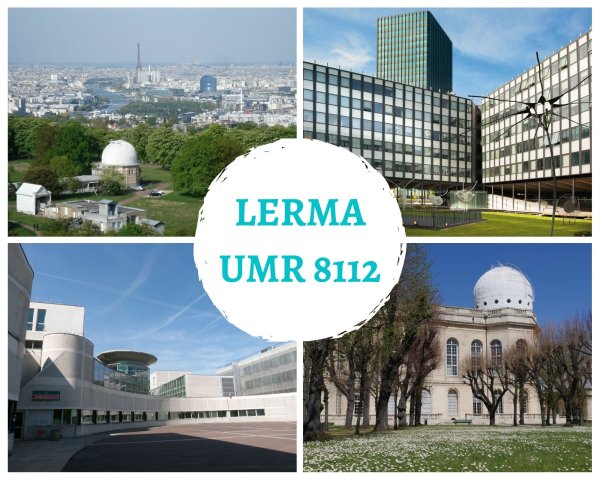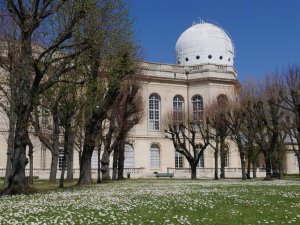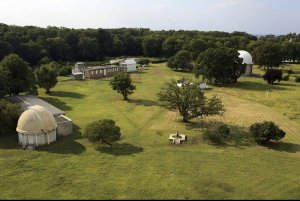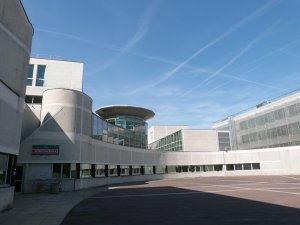Presentation of LERMA
Publié le 22 December 2020 par .
General presentation
The LERMA (Laboratoire d’Etudes du Rayonnement et de la Matière en Astrophysique et Atmosphères) is a joint research unit (UMR 8112) between the CNRS and 3 higher education institutions, the Paris Observatory (OP), Sorbonne University (SU) and Cergy Paris University (CYU).
Geographic diversity
LERMA is a laboratory with the particularity of being located on 4 sites in the Paris region :
- Paris Observatory
- Observatory of Meudon
- Sorbonne University - UPMC
- Cergy Paris University - Neuville site
Complex structure
The LERMA has 4 supervisory bodies : the CNRS - Ile-de-France Meudon delegation (DR5), the Paris Observatory - PSL and the institutions Sorbonne University and Cergy Paris University.
In the laboratory there are 24 researchers (including 5 emeritus and 2 under contract), 7 astronomers (including 1 emeritus), 31 teacher-researchers (including 5 emeritus), 37 engineers and technicians (including 4 under contract), 22 PhD students and 6 post-docs (number of staff on 01/10/2020).
Not all members have the same employer. Indeed there are 7 different employers within the LERMA.
Its main doctoral school is ED 127, Astronomie et Astrophysique d’Île-de-France but its students also belong to 4 other doctoral schools (ED 129, 391, 564 PIF and 417).
An organization in poles
Research at LERMA is organized into 4 thematic research clusters and 1 support cluster.
Research teams conduct programs in the fields of cosmology and galaxies, dynamics of interstellar media and stellar plasmas, molecules in the Universe and instrumentation and remote sensing.
Research teams conduct programs in the fields of cosmology and galaxies, dynamics of interstellar media and stellar plasmas, molecules in the Universe and instrumentation and remote sensing.
- "Galaxies and Cosmology" (OP)
– Primordial universe (inflation, cosmic microwave background, reionization)
– Galaxy formation and evolution (high redshift galaxies, secular evolution and galaxy fusion)
– Cluster of galaxies
– Dark matter (cold, warm or modified gravity)
– Active nuclei, stellar formation and feedback in galaxies (efficiency, history and stellar populations)
– Black holes and galaxies (AGN, starburst, symbiotic growth and feedback)
To learn more about Pole 1, click here or go to the "RESEARCH" tab.
- "Dynamics of interstellar media and stellar plasmas" (OP, SU)
– Observational characterization of the interstellar cycle
– Formation of stars and planets
– Modeling of interstellar medium condensation, from diffuse gas to stars and disks
– Chemical diagnostics of interstellar dynamics
– Turbulence and radiative transport in (circum-)stellar plasmas
To learn more about pole 2, click here or go to the "RESEARCH" tab.
- "Molecules in the Universe" (SU, CYU, OP)
– Gas-surface interactions (spin, photons and ice, reactivity on cold surfaces)
– Gas phase collisional processes
– Theory and simulations (collisional excitation and reactivity of interstellar molecules)
– Abnormalities in nuclear spin and isotope ratios
– Molecular parameters for terrestrial, planetary and interstellar atmospheres
– Molecular spectroscopy experiments (molecular spectroscopy and laser instrumentation for the environment, high-resolution VUV spectroscopy of interstellar molecules)
To learn more about pole 3, click here or go to the "RESEARCH" tab.
- "Instrumentation and remote sensing" (OP)
– THz components and subsystems
– Heterodyne THz instruments (for ground-based or on-board observatories (balloons, satellites) such as Herschel/HIFI and JUICE/SWI)
– Research and development activity (HEB and SIS mixers, Schottky diodes)
– Characterization of clear, cloudy and rainy atmospheres
– Characterization of the surfaces of the Earth, planets and comets
– Data processing, archiving and enhancement
To learn more about the pole 4, click here or go to the "RESEARCH" tab.





